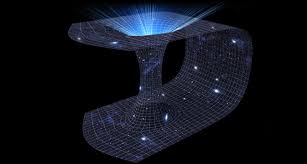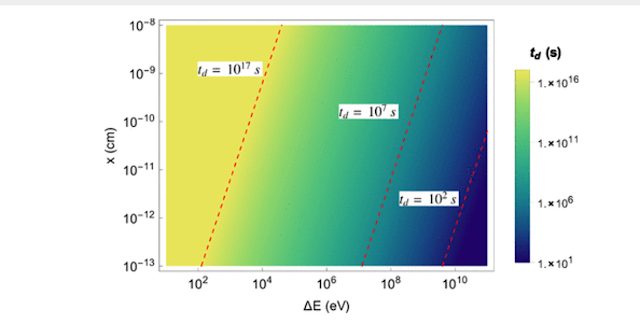
Breaking News
 Will Payment Of 50 Percent Of Food Stamp Benefits Be Enough To Keep Widespread Rioting...
Will Payment Of 50 Percent Of Food Stamp Benefits Be Enough To Keep Widespread Rioting...
 Interview 1985 - Revolution or Civil War on The Jimmy Dore Show
Interview 1985 - Revolution or Civil War on The Jimmy Dore Show
 Steak 'n Shake Launches First-Ever Strategic Bitcoin Reserve
Steak 'n Shake Launches First-Ever Strategic Bitcoin Reserve
 Mike Rowe appears to be receiving flak for daring to explore the potential dangers of vaccines...
Mike Rowe appears to be receiving flak for daring to explore the potential dangers of vaccines...
Top Tech News
 The 6 Best LLM Tools To Run Models Locally
The 6 Best LLM Tools To Run Models Locally
 Testing My First Sodium-Ion Solar Battery
Testing My First Sodium-Ion Solar Battery
 A man once paralyzed from the waist down now stands on his own, not with machines or wires,...
A man once paralyzed from the waist down now stands on his own, not with machines or wires,...
 Review: Thumb-sized thermal camera turns your phone into a smart tool
Review: Thumb-sized thermal camera turns your phone into a smart tool
 Army To Bring Nuclear Microreactors To Its Bases By 2028
Army To Bring Nuclear Microreactors To Its Bases By 2028
 Nissan Says It's On Track For Solid-State Batteries That Double EV Range By 2028
Nissan Says It's On Track For Solid-State Batteries That Double EV Range By 2028
 Carbon based computers that run on iron
Carbon based computers that run on iron
 Russia flies strategic cruise missile propelled by a nuclear engine
Russia flies strategic cruise missile propelled by a nuclear engine
 100% Free AC & Heat from SOLAR! Airspool Mini Split AC from Santan Solar | Unboxing & Install
100% Free AC & Heat from SOLAR! Airspool Mini Split AC from Santan Solar | Unboxing & Install
 Engineers Discovered the Spectacular Secret to Making 17x Stronger Cement
Engineers Discovered the Spectacular Secret to Making 17x Stronger Cement
Entanglement of quantum clocks through gravity

Researchers find that there exist fundamental limitations to the joint measurability of time along neighboring space–time trajectories, arising from the interplay between quantum mechanics and general relativity. Because any quantum clock must be in a superposition of energy eigenstates, the mass–energy equivalence leads to a trade-off between the possibilities for an observer to define time intervals at the location of the clock and in its vicinity. This effect is fundamental, in the sense that it does not depend on the particular constitution of the clock, and is a necessary consequence of the superposition principle and the mass–energy equivalence. They show how the notion of time in general relativity emerges from this situation in the classical limit.
In general relativity, the picture of space–time assigns an ideal clock to each world line. Being ideal, gravitational effects due to these clocks are ignored and the flow of time according to one clock is not affected by the presence of clocks along nearby world lines. However, if time is defined operationally, as a pointer position of a physical clock that obeys the principles of general relativity and quantum mechanics, such a picture is, at most, a convenient fiction. Specifically, we show that the general relativistic mass–energy equivalence implies gravitational interaction between the clocks, whereas the quantum mechanical superposition of energy eigenstates leads to a nonfixed metric background. Based only on the assumption that both principles hold in this situation, we show that the clocks necessarily get entangled through time dilation effect, which eventually leads to a loss of coherence of a single clock. Hence, the time as measured by a single clock is not well defined. However, the general relativistic notion of time is recovered in the classical limit of clocks.
In the (classical) picture of a reference frame given by general relativity, an observer sets an array of clocks over a region of a spacial hypersurface. These clocks trace world lines and tick according to the value of the metric tensor along their trajectory. Here we have shown that, under an operational definition of time, this picture is untenable. The reason does not only lie in the limitation of the accuracy of time measurement by a single clock, coming from the usual quantum gravity argument in which a black hole is formed when the energy density used to probe space–time lies inside the Schwarzschild radius for that energy. Rather, the effect we predict here comes from the interaction between nearby clocks, given by the mass–energy equivalence, the validity of the Einstein equations, and the linearity of quantum theory. We have shown that clocks interacting gravitationally get entangled due to gravitational time dilation: The rate at which a single clock ticks depends on the energy of the surrounding clocks. This interaction produces a mixing of the reduced state of a single clock, with a characteristic decoherence time after which the system is no longer able to work as a clock. Although the regime of energies and distances in which this effect is considerable is still far away from the current experimental capabilities, the effect is significant at energy scales that exist naturally in subatomic particle bound states.




